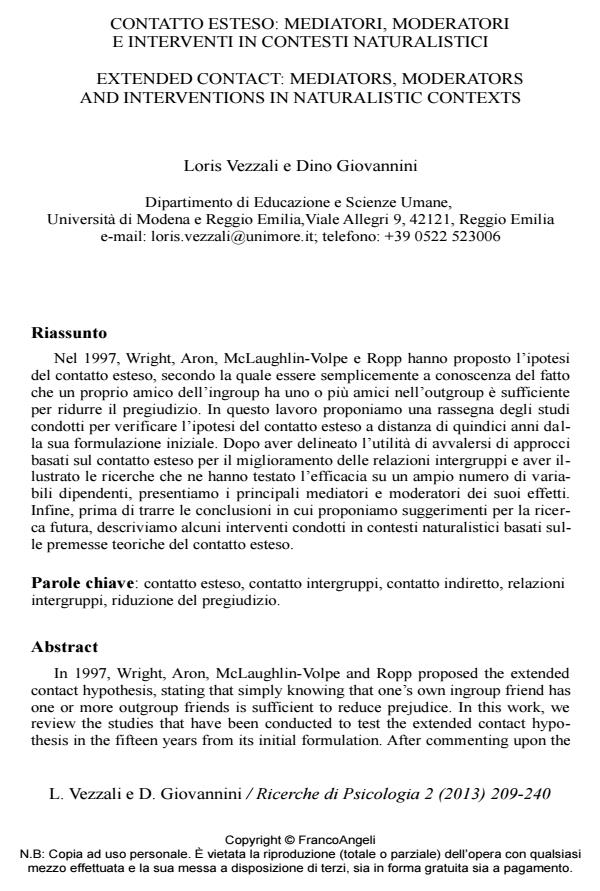Contatto esteso: mediatori, moderatori e interventi in contesti naturalistici
Titolo Rivista RICERCHE DI PSICOLOGIA
Autori/Curatori Loris Vezzali, Dino Giovannini
Anno di pubblicazione 2013 Fascicolo 2013/2
Lingua Italiano Numero pagine 32 P. 209-240 Dimensione file 304 KB
DOI 10.3280/RIP2013-002001
Il DOI è il codice a barre della proprietà intellettuale: per saperne di più
clicca qui
Qui sotto puoi vedere in anteprima la prima pagina di questo articolo.
Se questo articolo ti interessa, lo puoi acquistare (e scaricare in formato pdf) seguendo le facili indicazioni per acquistare il download credit. Acquista Download Credits per scaricare questo Articolo in formato PDF

FrancoAngeli è membro della Publishers International Linking Association, Inc (PILA)associazione indipendente e non profit per facilitare (attraverso i servizi tecnologici implementati da CrossRef.org) l’accesso degli studiosi ai contenuti digitali nelle pubblicazioni professionali e scientifiche
Nel 1997, Wright, Aron, McLaughlin-Volpe e Ropp hanno proposto l’ipotesi del contatto esteso, secondo la quale essere semplicemente a conoscenza del fatto che un proprio amico dell’ingroup ha uno o piu amici nell’outgroup e sufficiente per ridurre il pregiudizio. In questo lavoro proponiamo una rassegna degli studi condotti per verificare l’ipotesi del contatto esteso a distanza di quindici anni dalla sua formulazione iniziale. Dopo aver delineato l’utilita di avvalersi di approcci basati sul contatto esteso per il miglioramento delle relazioni intergruppi e aver illustrato le ricerche che ne hanno testato l’efficacia su un ampio numero di variabili dipendenti, presentiamo i principali mediatori e moderatori dei suoi effetti. Infine, prima di trarre le conclusioni in cui proponiamo suggerimenti per la ricerca futura, descriviamo alcuni interventi condotti in contesti naturalistici basati sulle premesse teoriche del contatto esteso.
Parole chiave:Contatto esteso, contatto intergruppi, contatto indiretto, relazioni intergruppi, riduzione del pregiudizio.
Loris Vezzali, Dino Giovannini, Contatto esteso: mediatori, moderatori e interventi in contesti naturalistici in "RICERCHE DI PSICOLOGIA " 2/2013, pp 209-240, DOI: 10.3280/RIP2013-002001